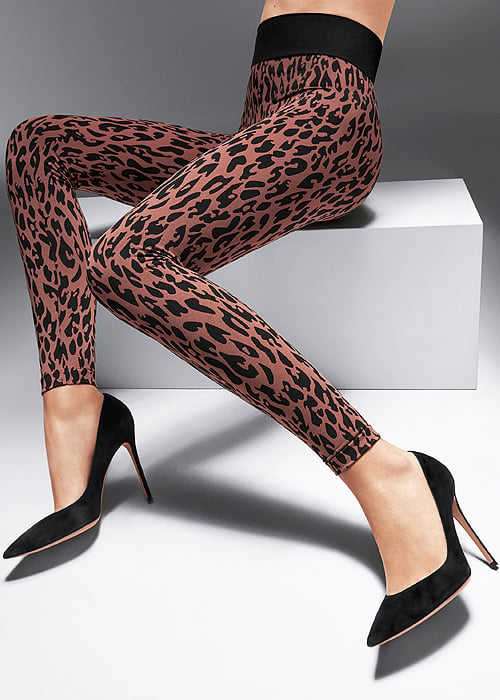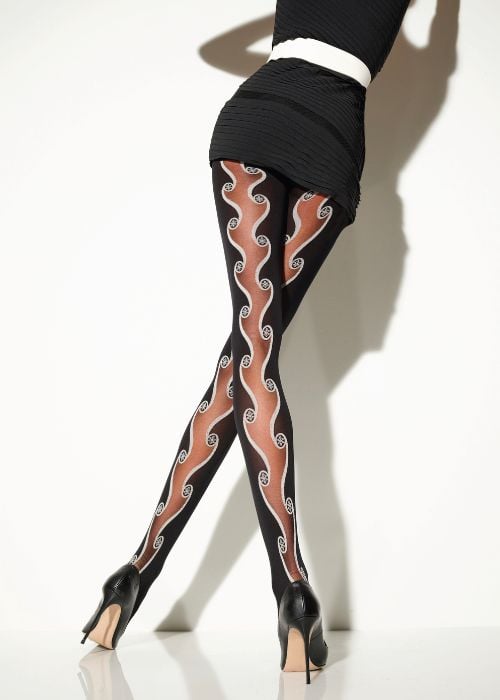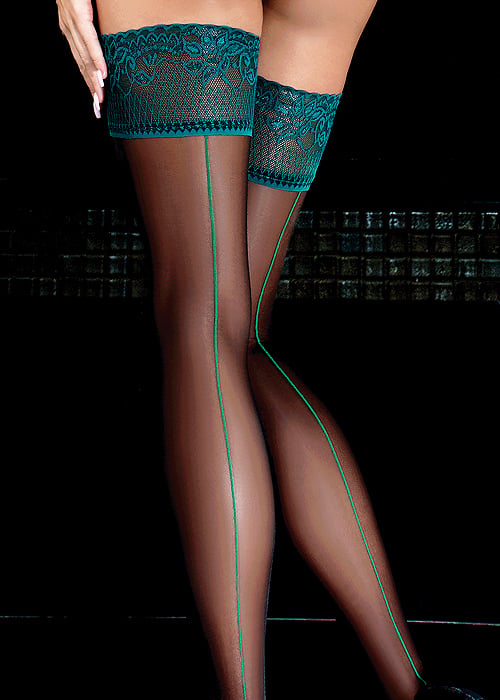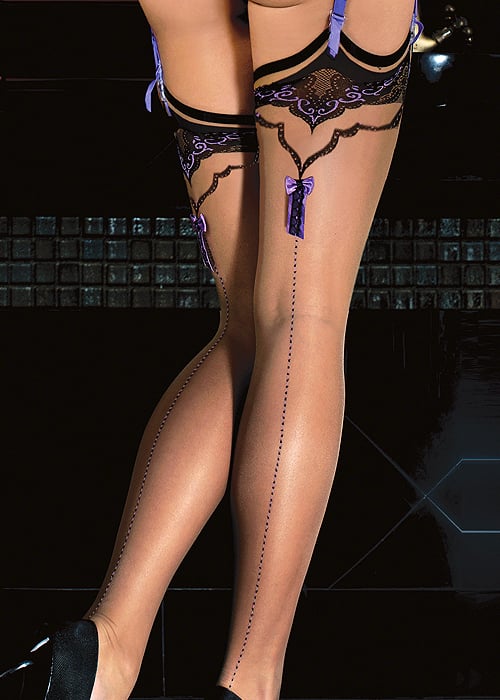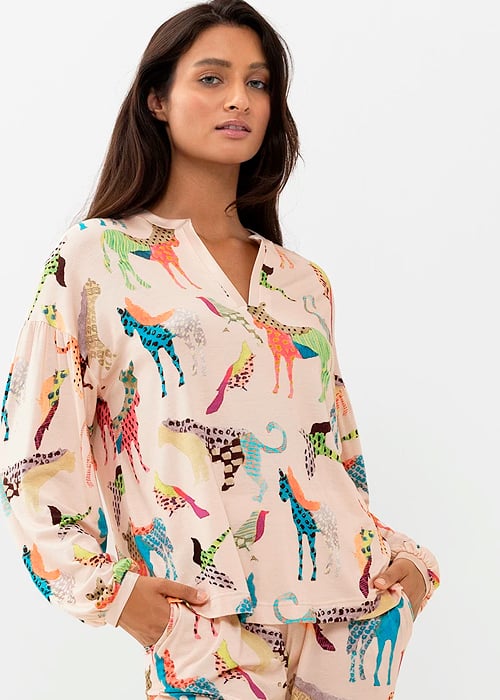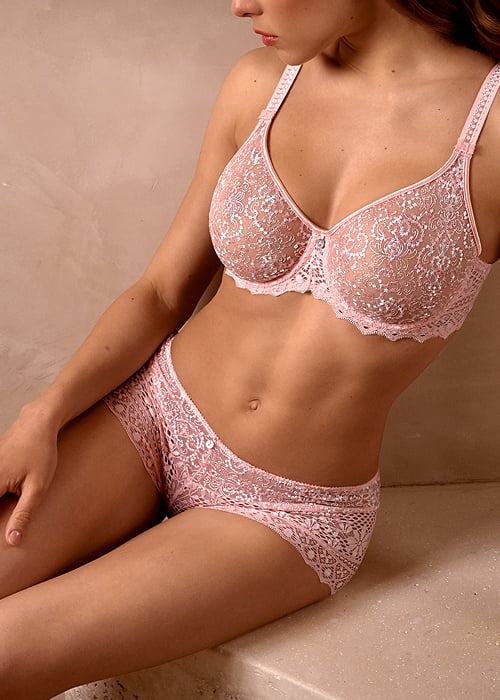A Brief History Of Hosiery
Our Tights, hosiery & leg wear have been around for a lot longer than most people first realize. Of course, like anything else in history, it's taken many different forms and come in different shapes and sizes, but it's still leg wear and it still performs the same function as it has always done; To fit close to your skin, keep you warm and feel beautiful.
The earliest example of an item of hosiery was in Egypt. Archaeologists discovered the first socks in a tomb from Ancient Egypt. Historically, Pharaohs were buried with food, gold and garments as they believed that these items came with you when you died and you should have everything you need surrounding you in your tomb. A pair of woven ladies socks were found buried in the chamber of a rich noble. These weren't crude either. The socks featured a fitted heel and a draw chord at the top, making them one of the earliest examples of complex, manufactured clothing. The find itself dates from around 500AD, but they would have been constructed centuries, perhaps millennia earlier, making leg wear at least 2000 years old.
Leg wear has come a long way since then and modern hosiery is very different to the ancient examples above. Some of the more recent updates actually come from unexpected sources that aren't normally associated with making beautiful underwear. In 1598, a Reverend by the name of William Lee invented the very first machine used for knitting. Members of the clergy were often the inventors of innovations such as this one, as their lives were dedicated to scholarship. Before that, all knitting was done by hand and larger garments like full length items of hosiery were incredibly time-consuming and labour intensive. But in the Middle Ages, there was a re-emergence of science and experimentation amongst scholars and in order to make difficult daily life less laborious, scholars would put resources and time into developing new machinery that would speed up daily tasks. Modern manufacturing and the fashion world in general is shaped today by the way these early inventors created the first looms and the clothing they produced with them.
As the English clergy are closely tied with the royal family and the Crown, this breakthrough was something that was presented to the monarch first. Reverend Lee presented the first pair of stockings made from pure silk first to Queen Elizabeth I of England, then to James I, but both refused the patent [1]. Reverand Lee had his first prototype machine ready in 1600.
In the 1600s, all silk was imported from China by sea or by cart across the land. This journey took months and silk was incredibly expensive, making Rev. Lee's gift a very luxurious one and it marked his machine as a true breakthrough in the industry.
After this first breakthrough, leg wear became a common sight amongst members of the aristocracy. Hose was a new and popular form of dress and is associated with many different periods of dress. Most noblemen can be seen sporting some form of hose in portraits and paintings and it was a symbol of wealth that an individual could afford such difficult to manufacture items of clothing.
This did eventually change. The improvements of John Ashton, one of Rev. Lee's assistants [1], made the invention more accessible. Manufacture became easier and better machines were created to facilitate manufacturing and make it speedier or safer or just generally less expensive. As hose and stockings became more commonplace and less expensive, other forms of hosiery emerged.
Many believe that stockings were the normal style of dress until tights were invented after the Second World War. Tights were not a Post-War invention and appeared long before the 1940s. This is due to the fact that tights remained controversial for decades after they were first manufactured.
The first pair of tights were actually manufactured in 1803. Hosiery had remained largely unchanged for the last 200 years, but at the start of the 1800s, the first pair of tights were made on a similar machine to Lee's. They were controversial for the main reason that the company responsible for making them intended tights to be a replacement for petticoats.
Instead of an overly long set of undergarments, women would wear a pair of tights instead. This would provide warm and modesty, meaning just a free-flowing long dress could be worn over the top. The original aim was for the same amount of coverage, with less time spent preparing in the morning, but this made the dresses less stifling and allowed them to move with the body more freely. It also meant dresses and skirts could be shorter and expose more leg, leaving only form-fitting tights to keep the legs under wraps.
This more open and free approach to style and dress was seen as lewd at the time and remained stigmatised throughout the Victorian era. The reason we associate tights with the Second World War was that the practicality first became truly accepted around that time. Tights are far easier to produce than stockings and many clothing machines were repurposed for making soldiers uniforms, so any production that took a long time was detrimental for the company and designer.
Another breakthrough that made it hugely convenient to make hosiery in the 40s was Nylon. This inexpensive and durable material was the perfect way to create something that lasted and wouldn't tear on the first wear whilst being easy to work with in the factory. Another reason Nylon became so popular was that parachutes were made almost entirely of silk and most of this material was rationed so that infantrymen would have the best fabric for the job.
Nylon was invented in the 1930s and soon became a popular item for designers to use in all kinds of clothing. Hosiery was naturally at the top of the list as it was something that had to be stretched over your legs, so it needed to be made of stronger stuff. To this day it is still the most popular pick for designers.
It took until the 1970s for tights to overtake nylon stockings in popularity. Since then, their wild popularity has been experimented with many times and the iconic boom of leggings in the 80s and 90s set their popularity in stone. With the modern methods of printing that have been available for the past few decades, fashion tights and other hosiery are now the best methods for producing interesting and creatives designs. Today, tights and hosiery are the perfect accessories for any outfit and can transform any ensemble.
- - -
[1] https://www.britannica.com/biography/William-Lee
[2] Hosiery History

